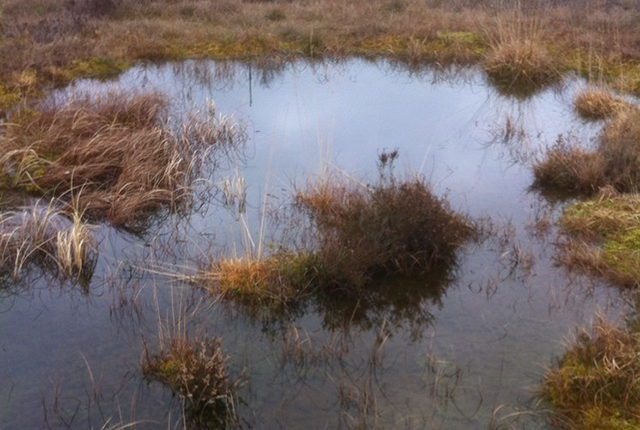Carbon capture and sequestration in peat in response to positive and negative feedbacks
Harnessing the carbon-storage capacity of peatlands by investigating a series of organic supplements that can release phenolic compounds and test whether these can suppress greenhouse gas release.
08/09/2017 By BGS Press
Coleen Murty is a PhD student working with Chris Vane focusing on harnessing the carbon-storage capacity of peatlands by investigating a series of organic supplements that can release phenolic compounds, and test whether these can suppress greenhouse gas release.
In spite of various studies focusing on enhancing carbon capture in the oceans and on land through afforestation, there has been no known attempts at increasing the carbon-storage capacity of peatlands or utilising them to store externally captured carbon.
Why study peatlands?
Northern peatlands are one of the largest terrestrial carbon sinks on the planet, storing approximately one third of global carbon stocks, equivalent to approximately 547 Gt of carbon. Ombrotrophic peats (those that derive their nutrients from atmospheric moisture) dominate in high latitudes and temperate climates, and are characterised by acidic conditions and low microbial degradation rates, which result in net carbon sequestration. Evidence suggests that global warming is amplifying the global hydrological cycle, thus causing periodic variations in the water table across the northern peatlands. Resulting implications could mean changes to feedback mechanisms controlling rates of carbon accumulation/decay in peatland areas — potentially converting a current global carbon sink to a carbon source.
This research aims to investigate sphagnum acid in more depth by determining which form it primarily exists within peat — in its free form or a bound form within the cell. Results could give insights into the best way of preserving carbon. In order to answer the question of whether capture and sequestration of carbon in peat is feasible, the chemical nature peat organic matter must be understood at a deeper level.

Sphagnum acid.
Contact
Please contact Chris Vane for further information.


